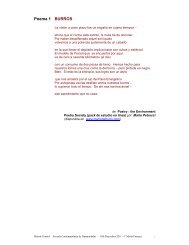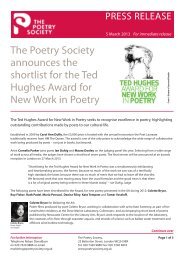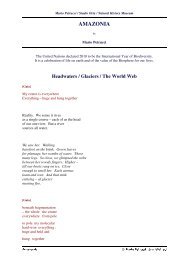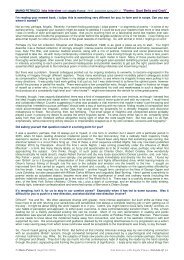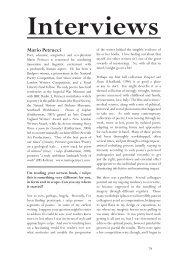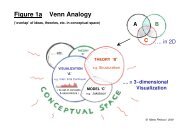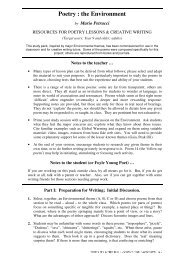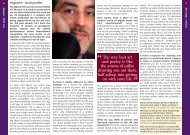Scientific Visualizations: Bridge-Building between ... - Mario Petrucci
Scientific Visualizations: Bridge-Building between ... - Mario Petrucci
Scientific Visualizations: Bridge-Building between ... - Mario Petrucci
You also want an ePaper? Increase the reach of your titles
YUMPU automatically turns print PDFs into web optimized ePapers that Google loves.
296 MARIO PETRUCCI<br />
sciences and humanities [as Gould (2004, 6) puts it, for science and art]<br />
‘cannot be morphed into one simple coherence … but the two enterprises can<br />
lead us onward together … toward the common goal of human wisdom,<br />
achieved through the union of natural knowledge and creative art’. The idea<br />
that cross-situational pattern recognition may form the very armature of<br />
thought itself, with the roots of words themselves tangled in visual metaphor,<br />
should be read as an encouraging initial sign for anyone wishing to<br />
contribute to this union through visual analogy.<br />
Finally, if a Visualization is also an analogy, that means it relates to some<br />
aspect of Visualizability in the target as well as in the source (Figure 9).<br />
This double-ended quality to its Visualizing power is evidenced by the very<br />
fact that it works as an analogy. So, if a scientific (or any other kind of)<br />
Visualization operates successfully as an analogy for some aspect of literary<br />
studies, it must also be (to some extent) a literary Visualization. This project<br />
may therefore be helping to address the relative absence of <strong>Visualizations</strong> in<br />
the literary domain.<br />
Dangers; opportunities<br />
Visual analogies have potential pitfalls. For instance, how do we prevent<br />
student responses from unravelling into easy, arbitrary or gratuitous<br />
speculation? Without guidance, a study based purely on analogy (visual or<br />
otherwise) can quickly become all locus and no point, a bubble-bath of froth,<br />
lacking substance. Bad analogies spawn to outnumber the good: the former<br />
lead to confusion and false concepts; the latter are, at best, only ever partial<br />
figure 9<br />
<strong>Visualizations</strong> and the analogy-making process (a hypothesis).<br />
INTERDISCIPLINARY SCIENCE REVIEWS, Vol. 36 No. 4, December, 2011



